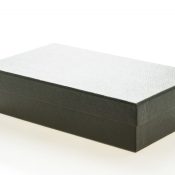
Qualitative vs Quantitative Research | Key Differences and Examples
The distinction between qualitative and quantitative studies is clearer than is often assumed. A distinction between standardized and reconstructive procedures or hypothesis-testing and theory-forming investigations makes more sense.
In general, quantitative processes – i.e., all methods that have to do with the necessary minimum quantities, measuring, counting, and calculating – are also based on qualitative principles and vice versa. If you work quantitatively, you use many assumptions or theoretical assumptions that (mostly) are no longer questioned but “only” used. For example, what a mean value or a correlation says must have been determined theoretically in advance.
On the other hand, qualitative methods only work with empiricism (even pure scientific theory in the form of the signifier, i.e., in the form of language, only works with empiricism), the interpretation and comparison of found materials.
However, some things differentiate quantitative from qualitative methods. How to research materials are communicated is standardized in quantitative research (e.g., via questionnaires created with form-creating apps or fixed measurement methods). And after the data has been collected, it must be precisely defined which criteria of experience or observation are permitted. In the case of qualitative approaches, the different systems of the researcher and research relevance must be taken into account in a systematic and controlled manner.
Communication is not “open” in the true sense, which is misleading. This means that in qualitative studies, attention is paid to how (even subliminally) communication takes place, what is written or said between the lines, and so on.
Standardized (quantitative) procedures always examine and interpret certain feature combinations’ statistical distribution. This, in turn, cannot be achieved by reconstructive (qualitative) procedures.
Instead, these methods capture structures and provide interpretations. To put it bluntly: Quantitative procedures (against the background of certain scientific-theoretical assumptions) describe how something is, strictly speaking, cannot examine why qualitative perspectives approach such questions about the reasons cautiously and tentatively. So while some test hypotheses (also methodically) empirically, others try – also empirically – to form such hypotheses or theories.
Unfortunately, the (actually necessary) interplay of both perspectives ( triangulation ) often needs to be revised in scientific practice. A theoretical critique and reformulation of quantitative methods are difficult, as is an empirical saturation of theoretical or qualitative analysis. But that’s only marginal.
What is quantitative research?
Quantitative data is designed to capture hard facts – just numbers. Quantitative data has structure and statistical power. They support you in the general conclusions you draw from your research using a quantitative survey.
What is qualitative research?
Qualitative data capture information that describes a subject rather than measures it. Think of impressions, opinions, and views. Qualitative surveys are less structured: they aim to delve deep into a topic and obtain information on the respondents’ motivation, mindset, and attitude. However, what is reflected in a deeper understanding of your research questions, on the one hand, makes it more difficult to analyze your results on the other.
Here are the key differences between qualitative and quantitative research.
Qualitative vs Quantitative research
What is the difference between qualitative research for the bachelor thesis and quantitative research? The following graphic illustrates the main difference between qualitative research and quantitative research.
The differences between qualitative vs quantitative research lie primarily in the type of data material. How it is obtained, i.e., qualitative research also uses qualitative research methods and is therefore based on a different research object and even draws on a different understanding of science.
The qualitative research methods differ from those of quantitative research, and the data analysis is carried out in a specific way in qualitative research and thus differs centrally from the data analysis of quantitative research.
Qualitative research | Quantitative Research | |
investigation order | non-experimental | experimental |
closing procedure | Deductive (from the general to the specific) -> Research logic is used in qualitative research to develop hypotheses | Inductive (from the specific to the general) -> Research logic is hypothesis-testing in quantitative research |
Scope | Qualitative research is holistic. | Quantitative research is part related (particular). |
cognition mode | • explanatory, descriptive (descriptive) mode of knowledge | • understanding, measuring knowledge mode • dedicated to the search for laws/ causalities |
Goal | The aim of qualitative research is to collect data about people’s experiences. | The aim of quantitative research is to collect data about the behavior of people. |
Contents | open research process | Testing of predefined hypotheses |
Investigation | Qualitative research is dedicated to examining a single case. | Quantitative research is devoted to examining a sample. |
Not only do the qualitative research methods differ from those of quantitative research, but also the data analysis is carried out in a specific way in qualitative research and thus differs centrally from the data analysis of quantitative research.
Data analysis in qualitative research | Data analysis in quantitative research |
Usually non-numeric and explicative | Usually numerical and reductive |
Grounded Theory | Descriptive Statistics |
Qualitative content analysis according to Mayring | inferential statistics |
(objective) hermeneutics | Mode value (=frequency count) |
discourse analysis | Average |
semiotics | Median (=central value) |
documentary method | correlation coefficient |
However, qualitative and quantitative research for your bachelor’s or master’s thesis does not represent a strict contradiction. Standardized data can also be included in qualitative research. This is particularly possible with case studies.
Case studies look at a few cases from different perspectives. So it can be the case, for example, that qualitative data was collected in interviews, but this later turns out to be quantitative data or is evaluated numerically.
Conclusion
Qualitative research differs from quantitative research, among other things, in the understanding of science, the arrangement of the investigation, the mode of knowledge, the conclusion procedure, the qualitative research method used, and the data material obtained.
A strict separation of qualitative research from quantitative research is only sometimes possible. Some data can be evaluated quantitatively and qualitatively, regardless of whether they were collected using a qualitative method.
You should opt for qualitative research if you want to gain as much knowledge as possible about your research subject and only have little prior knowledge at the beginning of qualitative research.
To use the advantages of qualitative and quantitative research, you can opt for a combination of both types of research.
Using a combination of methods in qualitative research can be very time-consuming. In any case, talk about such a project with the supervisor of your research project beforehand.
When planning your qualitative research, you should consider the five principles, subject appropriateness, openness, communication, processual, and reflection.
The most frequently chosen qualitative research methods are the interview, the group discussion, or a (participant) observation. However, other possibilities exist, such as a qualitative content analysis, a qualitative experiment, or a case study.




